The last performance. The final act. The final farewell. On the most unlikely stage. Felicitations. Forty years after the release of Orthodoxy and twenty years after the last reunion, CCCP - Fedeli alla Linea find themselves together again, among the austere halls of the Chiostri di San Pietro in Reggio Emilia, escaped from the rubble, survivors among the rubble, survivors of an era that is over, remote, swallowed up by history. The final performance before also consigning CCCP to history, CCCP-style. And so with a chapter, perhaps really the final one (but will it really be so?) of that expressionist theater that abusively exploited music (so says Giovanni Lindo Ferretti) and that was staged for seven years, until the dissolution of the Soviet Union, until the end of that pretext that had provided CCCP with their raison d’être. The acronym of the USSR in Cyrillic characters to be pronounced as it was pronounced in the homes of the lower Reggio Emilia populace: cicicipì often with third syllable swallowed. Some had taken them seriously, continued to take them seriously, still take them seriously. Despite the seriousness of their music, despite contrary utterances. But it is well known that relying on statements is tantamount to building mythographies.
What punk rock was was clear enough, although the labels fit more and better with the tins on supermarket shelves. Emilian melodic music was the cradle, the substratum, the background. What was pro-Soviet they didn’t even know, let alone others. Yet the adjective catalyzed attention: to provide a precise briefing come to the rescue the newspapers and magazines of the time, displayed in good quantity. A few lines of what was written about CCCP between ’85 and ’87: "This of the fashion of the Russian way of life just wasn’t to be expected, from the children of the spoiled consumerist West. And then, come on, let’s face it: maintaining proper relations with a superpower is fine, but even making pro-Sovietism in times like these, when not even the PCI does it anymore, or not to the absolute extent it used to, and with what is happening in Afghanistan... “. ”They firmly believe what they say, consider themselves the ’grandchildren of Togliatti’ and exalt Emilia because they consider it the most pro-Soviet of the Italian regions.“ ”The ’Soviet’ rock of CCCP Fedeli alla linea, the group invited last Sunday to the youth center Il Casalone for a concert, angered the DC. In fact, the Christian Democrats have submitted an interpellation to the San Donato district, where the center is located, demanding to know ’who authorized the use of the public facility of the Casalone’ for a clearly partisan event.“ There is also the blameless article in a provincial newspaper reporting on a running race with photos of four very young athletes: an absent-minded pager had written, in the caption under the faces of the teenage runners, ”CCCP faithful to the line," and what for anyone would have been a very negligible typo, for CCCP becomes an object to be preserved for decades and shown to the paying public. Perhaps this clipping, more than the memorabilia, more than the works created especially for the Chiostri di San Pietro(site specific, the kurators would say), more than the critics’ readings and interpretations, is enough to provide the most immediate image of what CCCP were.
Providing the image of what they are today, on the other hand, is mainly helped by the setting up of the large cloister, adorned with the almost complete repertoire of fetishes with which the band has built its image. In the center is a fragment of the Berlin Wall, the one that in 1999 was donated to the municipality of Albinea by the administration of Berlin’s ninth municipality, Treptow-Köpenick, twinned with the town nestled at the foot of the Apennines. The wall, placed in front of Albinea’s elementary schools, for the duration of the exhibition moves to the Chiostri di San Pietro. Next to it is the ever-present Trabant, which would later be celebrated by Danilo Fatur in one of his most infamous and inevitable solo pieces. Around it, the Frisian horses. Before that, the Vopos. A loudspeaker croaking the notes of Spara Jurij, their 1983-dated debut, Massimo Zamboni’s machine-gun guitar barrage that sounded like something out of a Damned or Dead Boys record, a sarcastic piece about the Korean airliner shot down a few months earlier by a Soviet fighter jet. They mistook it for a celebration of the Soviet invasion of Afghanistan: CCCP was taken far too seriously. Under the small cloister loggia the flags of the socialist countries that were. Under the loggia of the large cloister one of the most famous verses repeated with obsessive constancy. It is a question of quality is a question of quality is a question of quality is a question of quality is a question of quality. One enters the exhibition leaving the West. Achtung! Sie verlassen jetzt West-Berlin.
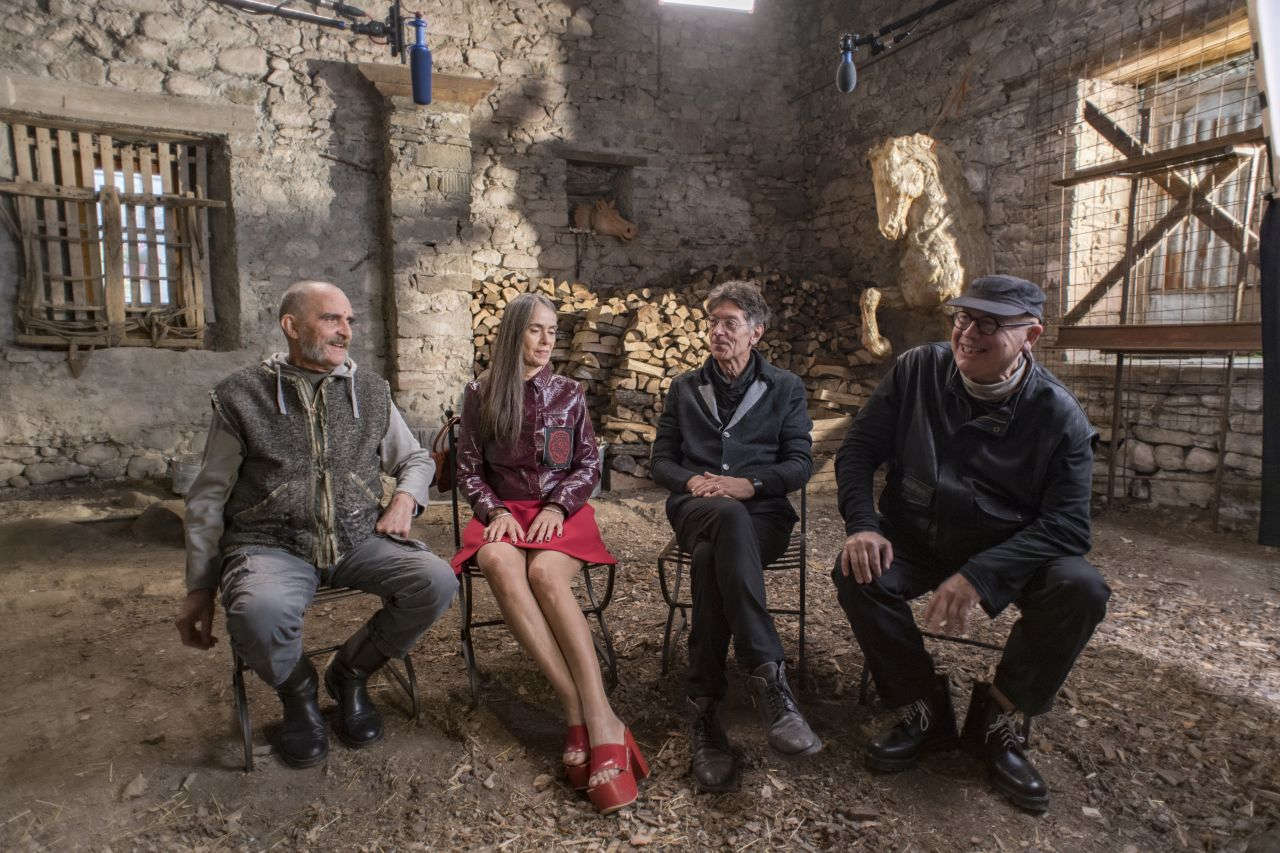
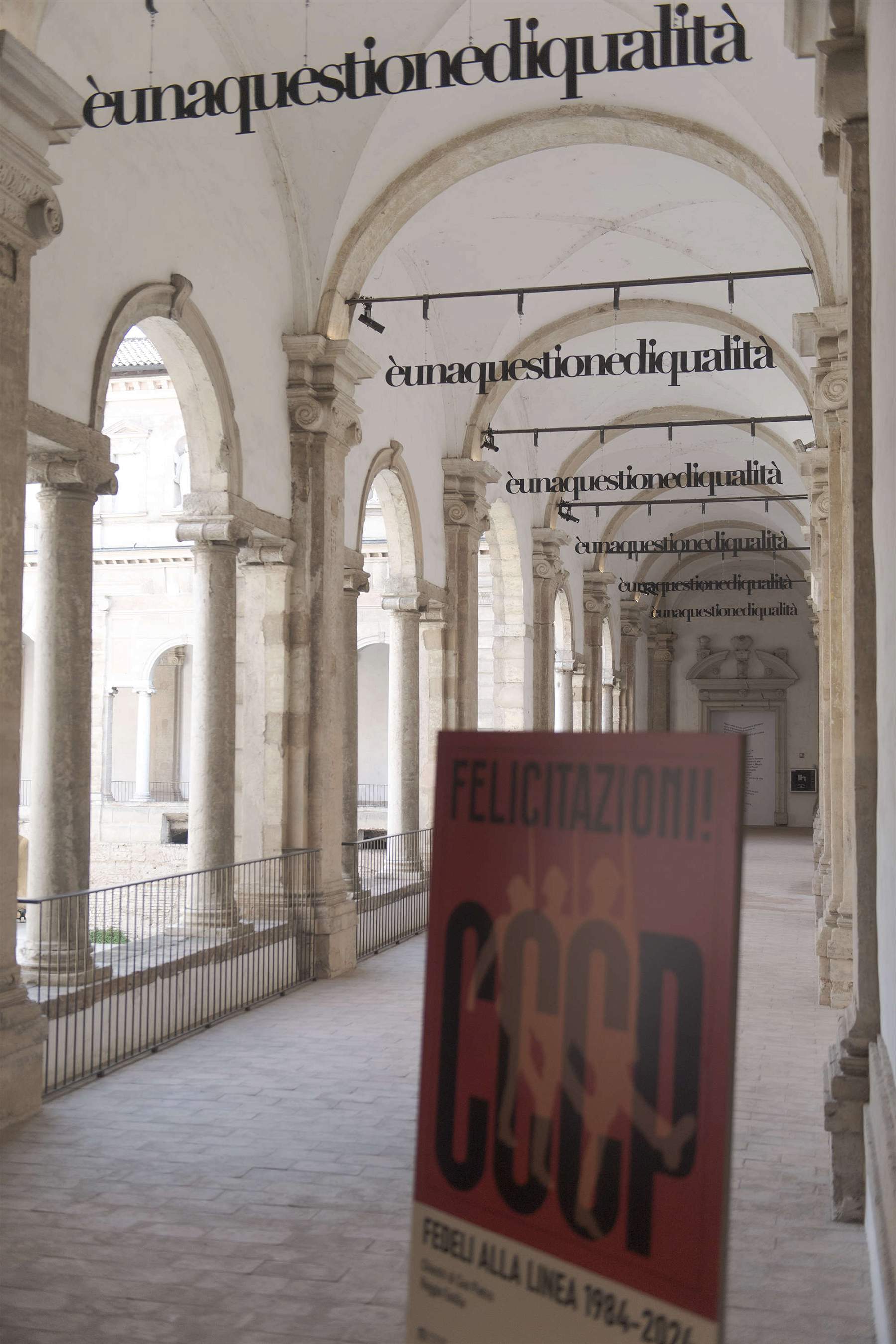



Inside the cloister halls, all sorts of things wander. Old communists in bad shape who despite their age have a hard time giving up their short pants and field cap, and even if today they have the tone of those who know it all they probably never stopped believing it (the improperî sequelae that nowadays Ferretti gets on social media almost every time he opens his mouth are proof). Young punks with their SLRs around their necks and their serviceable bunch of keys dangling from the carabiner attached to their pants, they walk around with their noses stuck to every shop window, admiring, contemplating, if they have to comment they do so in a whisper. Employees in jeans and blue shirts who have just finished their nine-to-five office shift and swarm to reverence the group they listened to as kids. Tourists. Retirees. Couples. Ladies. Teenagers. Much of the audience has never seen a live CCCP concert, yet they feel sincere nostalgia for them. All of them pausing in front of the display cases, looking at Soviet junk, vintage vinyls, newspaper clippings, hand-noted typescripts, workwear from the youth subcultures of the time, and photographs, with an attention that is unusual to encounter in exhibitions of this kind. Has anyone ever seen someone in a documentary exhibition stop in front of every single article, every single paper, every single notebook and read it all in its entirety? An unusual reserve that is home to numerous specimens of this endangered species. Can one feel nostalgia for something one has never experienced? An American who took it upon himself to find a word for all ills lacking definition coined a term to describe this feeling: “anemoia” (not very successful: “anemoia” is objectively revolting word despite romantic references to wind, thought and stuff). But it is not true that those who were not there cannot understand: they experienced CCCP differently. Everyone has and has had his or her CCCPs; those who don’t like them should get over it. They were also an inescapable reference for the paideia of those who grew up in the age of the end of ideologies. A solid presence in liquid society. Where solidity did not lie, of course, in political bearing. In spite of all the swelling caused by the feedback that in Stalingrad they do not pass. If anything, it lurked amidst the convoluted plots of the artistic project.
Arezzo, April 22, 1988, edition number two of the Arezzo Wave festival, CCCP are the special guests of the second night. A crowd of five thousand faithful has been waiting for days, for weeks, for months for the performance of their favorite group. Annarella Giudici and Danilo Fatur perform excerpts from Allerghia, the play written the year before especially for them. Ferretti, instead of singing, begins to declaim, in a sing-songy voice. “Strong is the interest that every power has in music as legitimate action and continuity or rupture and change. But music is intimately bound up with the life of man, of men, and resents clever pretensions. It may bind itself to the best of the human condition, but it also adapts well to the worst. [...] Music has times, rhythms, possibilities and powers that are its own alone, and which rarely coincide with those of organizations, movements that move toward the same ends but by other means. It is useless to ask music to back up actions or instruments peculiar to politics, because either one takes away the dignity of musical language or one debases the rationality of political language. It is useless and somewhat pathetic to savor the pleasure of music convinced that we are participating in a political battle. Music is serious, politics must be too.” It ends in booing and insults: the disappointed audience had not gotten what they expected. They had gotten better than that: what was perhaps the only moment of exit from the suspension of disbelief in the entire history of CCCP was being staged. They didn’t realize it.
Allerghia comes toward the end of the exhibition route. First it is time for a review. Seven rooms on the ground floor trace the history of CCCP. Seven like the years of the group’s life, seven like the records released as long as they were alive (counting EPs and the one collection), seven like the minutes of Emilia paranoica, the song that most represents the landscape where CCCP were born, a song with a strong visual impact, a piece of expressionist vedutismo that tells of anEmilia of the 1980s reached by the fragmented news of distant wars, icy, oppressive, populated by zombies who in the cold nights of the plains drag themselves from one club to another, bored, bloated with psychotropic drugs, looking for something without knowing what, waiting for something that will not come. And then there is the other Emilia, which overwhelms the audience in the second hall. Comrade Togliatti’s Emilia. Affinities and divergences. On the wall, a quote from the speech Togliatti gave at the Reggio Emilia Theater in September 1946. Theme: the PCI and the middle class. In front, the octagonal table that was in the PCI headquarters in Reggio Emilia. Around it, objects and furnishings that suggest, with an installation, the idea of the party headquarters. Then the journey through the history of CCCP continues. A sculpture by Fatur, an essay in agrarian neo-Dadaism, evokes the peasant epic of Emilia, a living presence in the band’s songs. There is a kitsch moment with a brutalist monument in polystyrene, by Luca Prandini, paying homage to the four survivors of the band: Ferretti Lindo Giovanni the punk, Zamboni Massimo the music, Giudici Annarella the femininity, Fatur Danilo the body. In the Songs Prayers Dances room, amid the props, among Fatur’s vaguely Duchampian sculptures, a screen projects in a continuous loop the rèclamas the four recorded to promote the third studio album, each playing a part. Annarella played a television announcer. Ferretti played a spirited and nervous newscaster. Zamboni played an infomercial barker. Fatur was doing Fatur. The album contained Madre, one of the group’s most refined and delicate songs: the chronicles tell us that CCCP, with Madre, managed to earn an article in Famiglia Cristiana, moreover benevolent. “CCCP Faithful to Mary.” It is also displayed, albeit with some emphasis. Ahead, the room Epica Etica Etnica Pathos is an exhibition within an exhibition: the series of photographs by Luigi Ghirri, taken for the record and displayed on all sides of the room, largely unpublished, marks one of the pinnacles of the exhibition, alone could be worth a visit. It ends with another of the pinnacles of CCCP’s history, their collaboration with Amanda Lear: the Tomorrow room features a giant picture of her and screens projecting videos of when she found herself singing with CCCP.
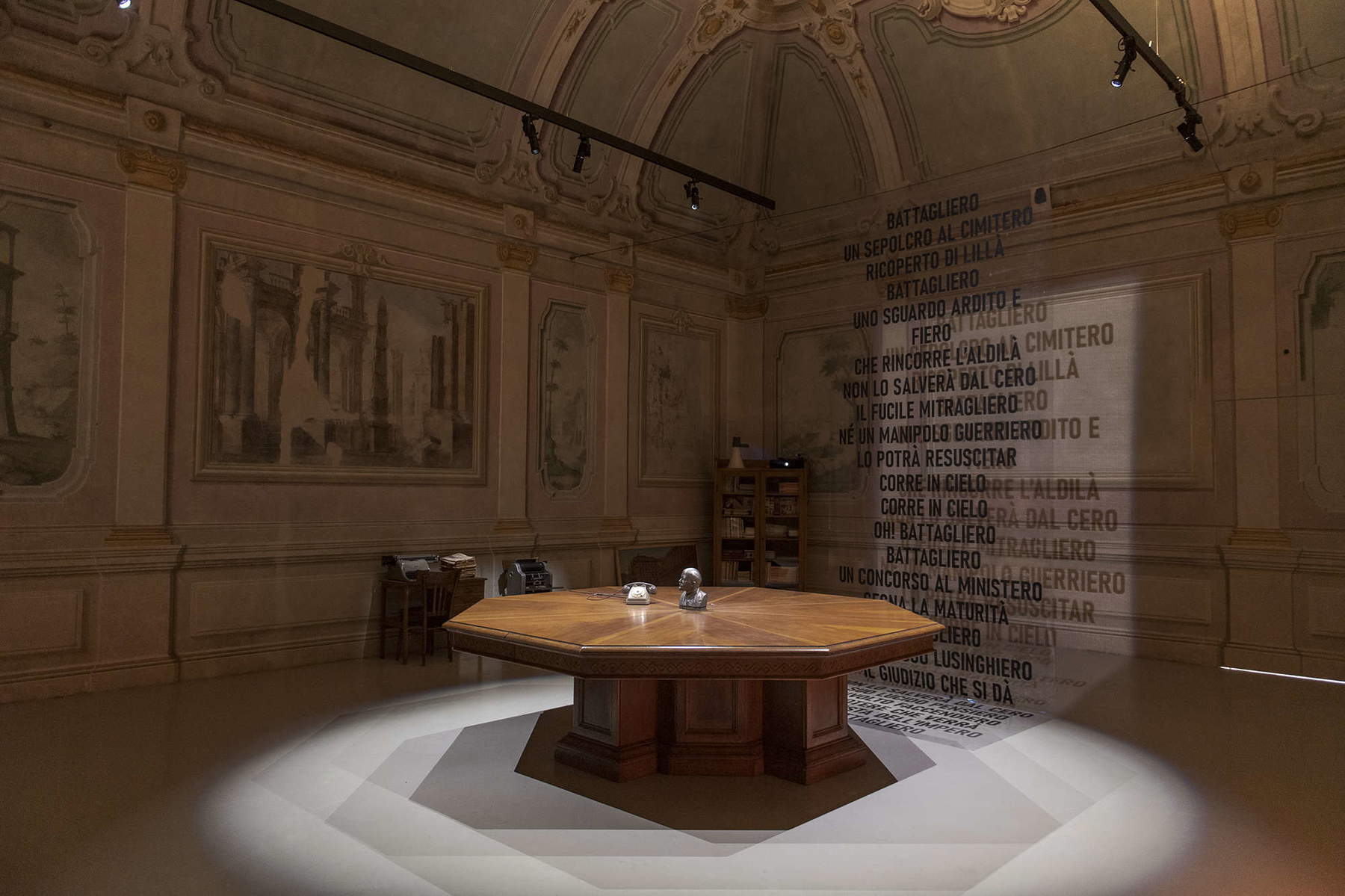

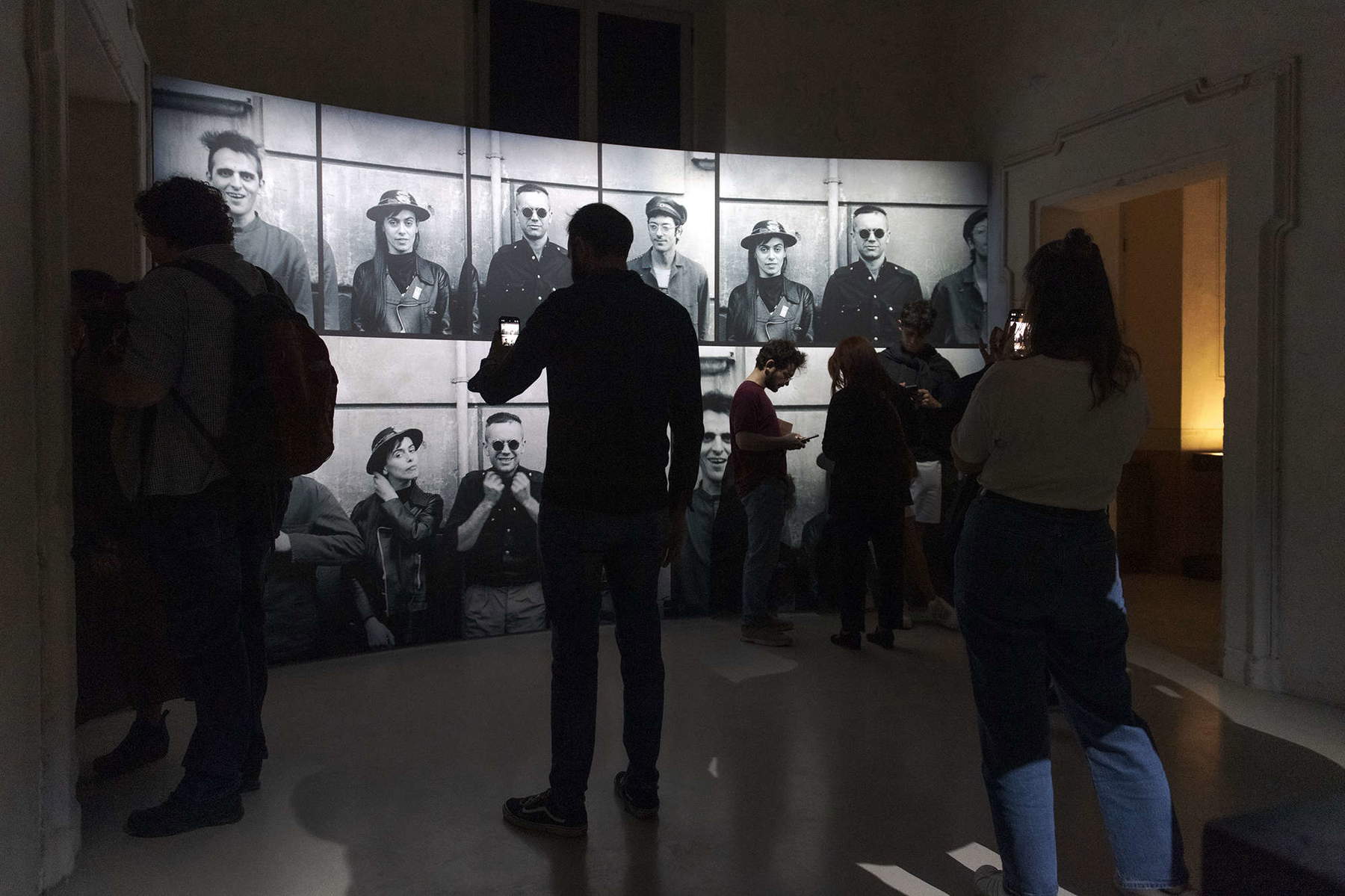


The end of the exhibition is still about 20 rooms away. One goes upstairs and even the stairs become an installation. The journey through CCCP ends, the journey into CCCP begins. “The dimension of the labyrinth,” reads the panel that introduces the audience to this ascent that seems like a descent, to this itinerary into the bowels, thoughts, and soul of CCCP all rendered in the form of installations inside a place perfect for evoking the group’s imagery. “A huge deconstructed extension that has the connotations of a thousand occupied houses in northern Europe. The crumbling walls, unfinished floors, temporary windows, no comfort except to find oneself among the installations as if they were clues to guess the exit.” Inside a gloomy room, with a chair in front of a screen, the notes of Mother resound. A kind of invocation before the labyrinth begins. One enters dazedly into a dark room with projections on the walls creating tapestries of news about CCCP that came out in the newspapers of the time, of whatever sign: negative, positive, exalting, mocking, scornful. One room recreates a small provincial theater: Allerghia is staged, projected on a loop. Fellegara evokes the country house where CCCP was born. On the short side, a barbed-wire barrier divides the audience from the equipment used for concerts and recordings. Those who have been to punk concerts know that real punks don’t incite the audience: enjoy the concert and maybe while you’re at it avoid busting your balls too much. In the center of the room a red couch, a small table, a wooden chair. On the two long sides slides projecting historical images and, on the opposite side, a video with the four members of CCCP filmed in 2023 as they walk toward you, stop and look at you.
Ahead, a somber room with a red-stained white dress (“and the invitation to the spectators to tear it”) recalls the Tiananmen massacre, in the background the video of a reckless Chinese man singing with a megaphone Io sto bene in his own language and country. Nearby Alas the Congress of the World acquaints the audience with the first public appearance of CCCP when they were not yet called CCCP. A long hallway Unreal Socialism mimics the pompous stage sets of the parades of communist regimes: from the speakers the Soviet anthem, their own footsteps amid banners with images of the leadership. Brénev Andropov Ceausescu Honecker Husák Tito Deng and others. Faces streaked with glimpses of light through a “way of the cross on Unter den Linden,” “a path of submissions amid those who will shortly fall in a single moment.” The corridor Onde retrieves, from a tape “given up for lost,” CCCP’s first concert in Reggio Emilia: an unreleased track emerges, Onde indeed, which slides down the speakers.
One ends up inside the aisle of A Carpi at the Tuwat, a “punkettona majesty” as they call it, in place of the altar a huge cloth projecting three hours of CCCP’s concert. CCCP, after all, is a kind of religion, a religion that in Reggio Emilia celebrates the event awaited by all religions, namely the return to earth of its deities, and like any self-respecting religion it has its worshippers, its rituals, its officiants, its officers, even its heretic, Umberto Negri, the band’s first bass player, who left the group in 1985 and today celebrates the anniversary in his own way. A religion that has its temple here. The great central nave of the cloisters even has its side chapels, each with its altarpieces, each with its patron deity. Loving you, the text of the “self-styled cover” over a sound carpet composed with the fragments of all the tribulations experienced by this kind of prodigal son. The Graphics Room: hammer and sickle, the important thing is to penetrate. Punk Islam, the shapes of a maze. Lombroso, the dark, cold and eerie environments of the San Lazzaro asylum, Curami, psychotropic drugs on the walls. The final blessing before the altar before the exit, Faithful to the Lyre, a collection “of insults and perplexities” expressed in print and leaflets. A few headlines: “CCCP’s pro-Soviet punk causes maxirissa in Rome.” “Faithful to the Line in San Remo.” “CCCP’s demented rock faithful to what line?” “Russian fights and rock ’n roll.” “Spitting and shoving for CCCP.” The invectives and accusations that become a work of art to lead the audience back out with a final poetic manifesto.


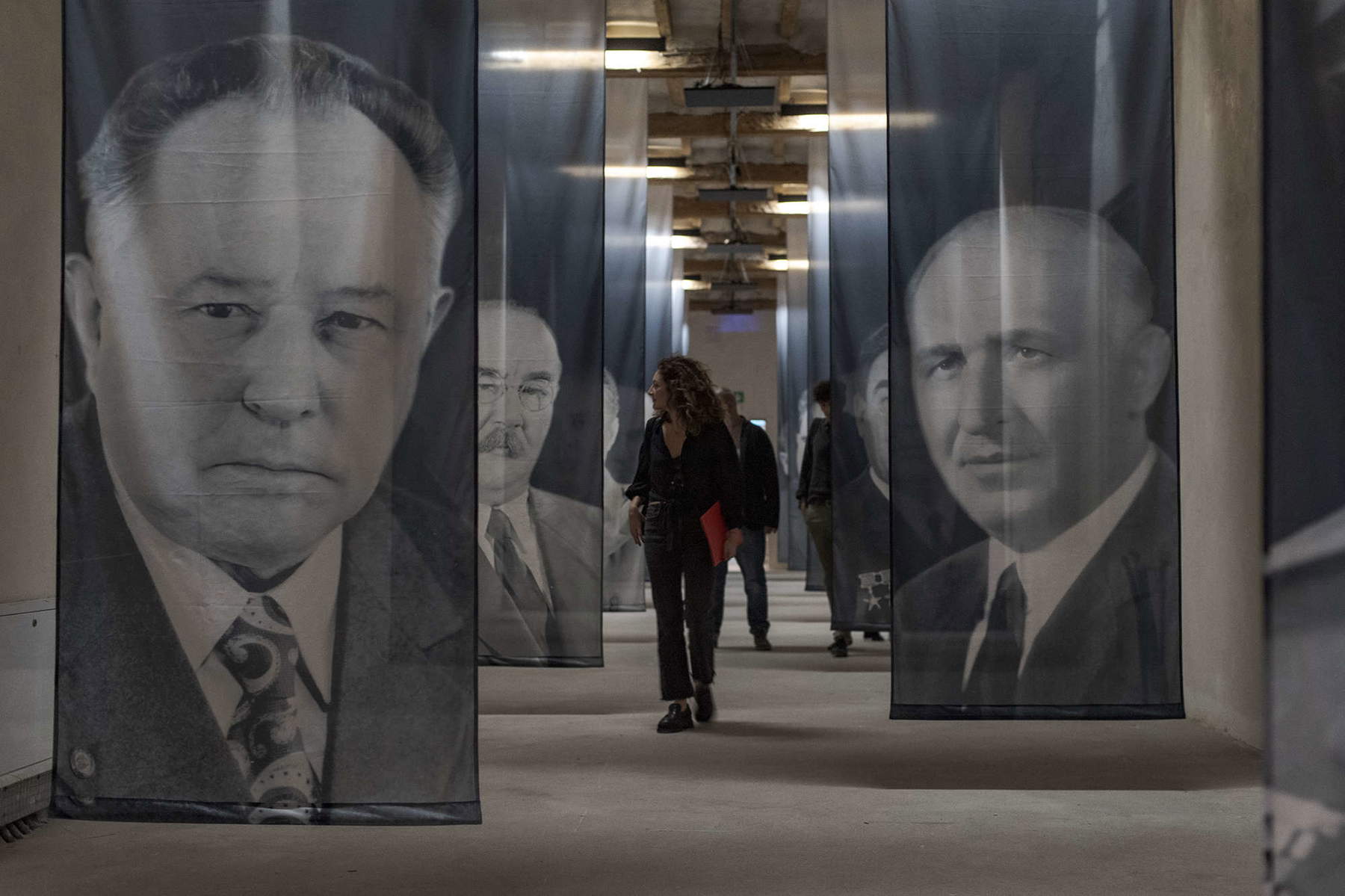
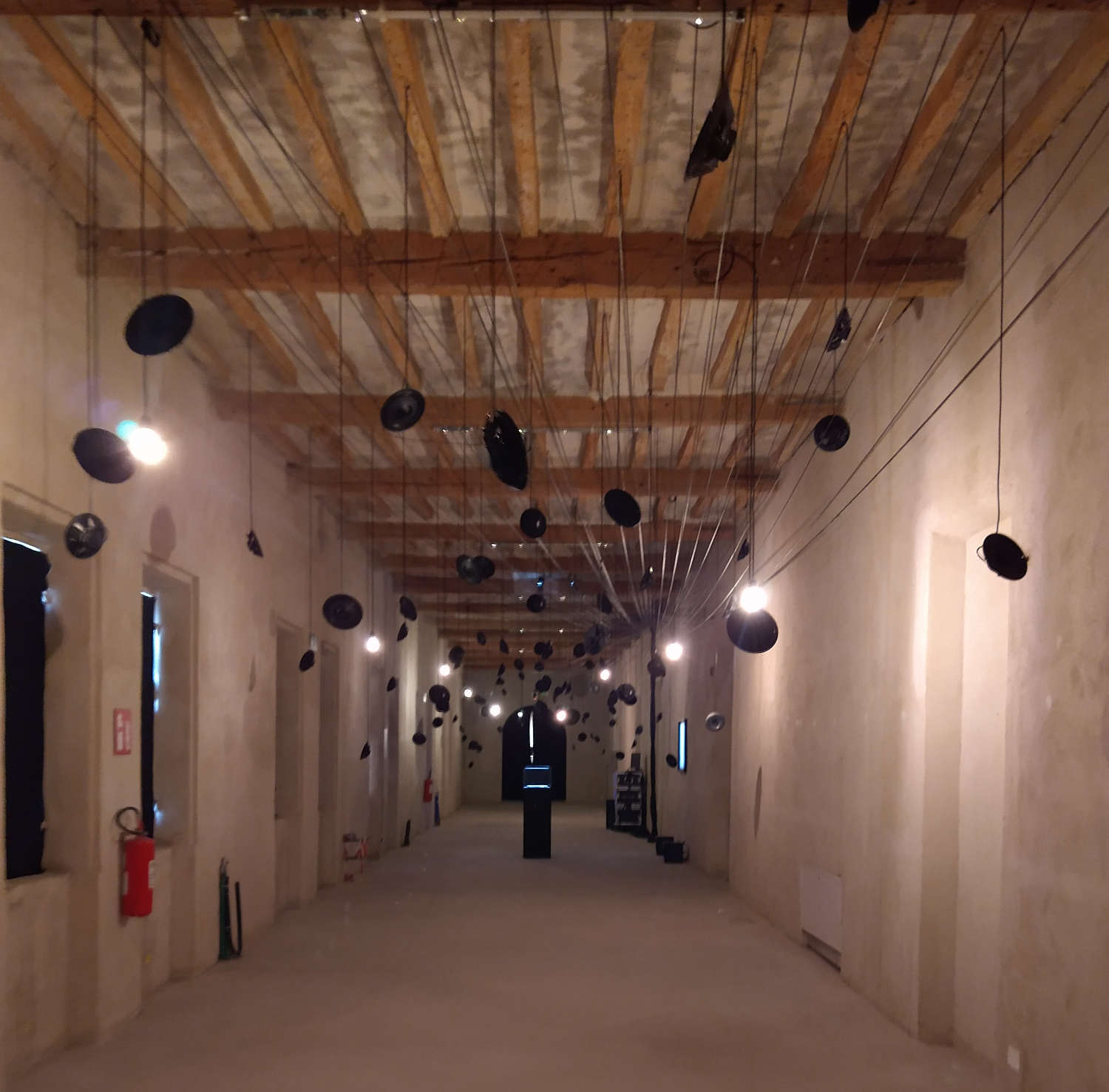
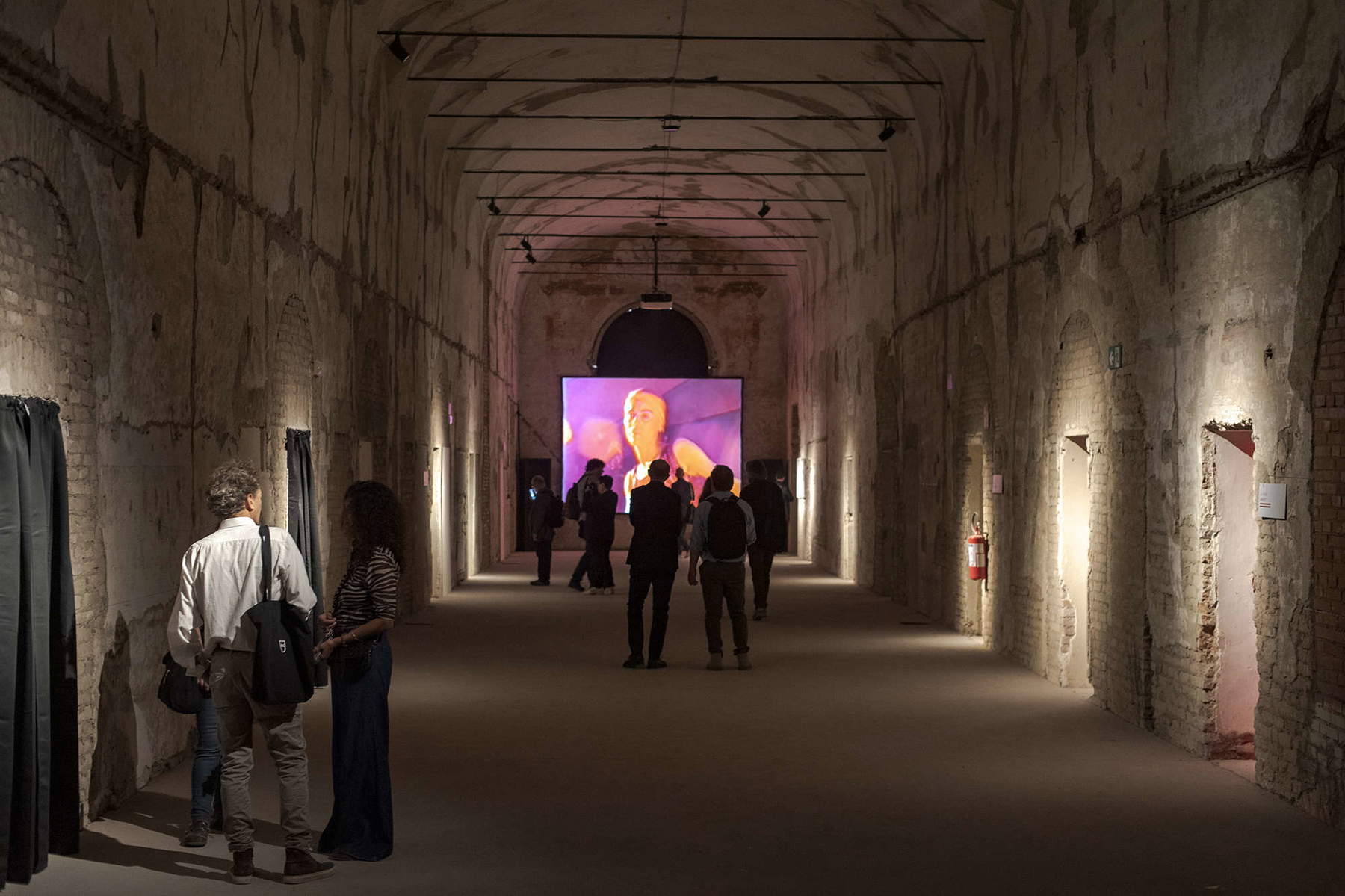

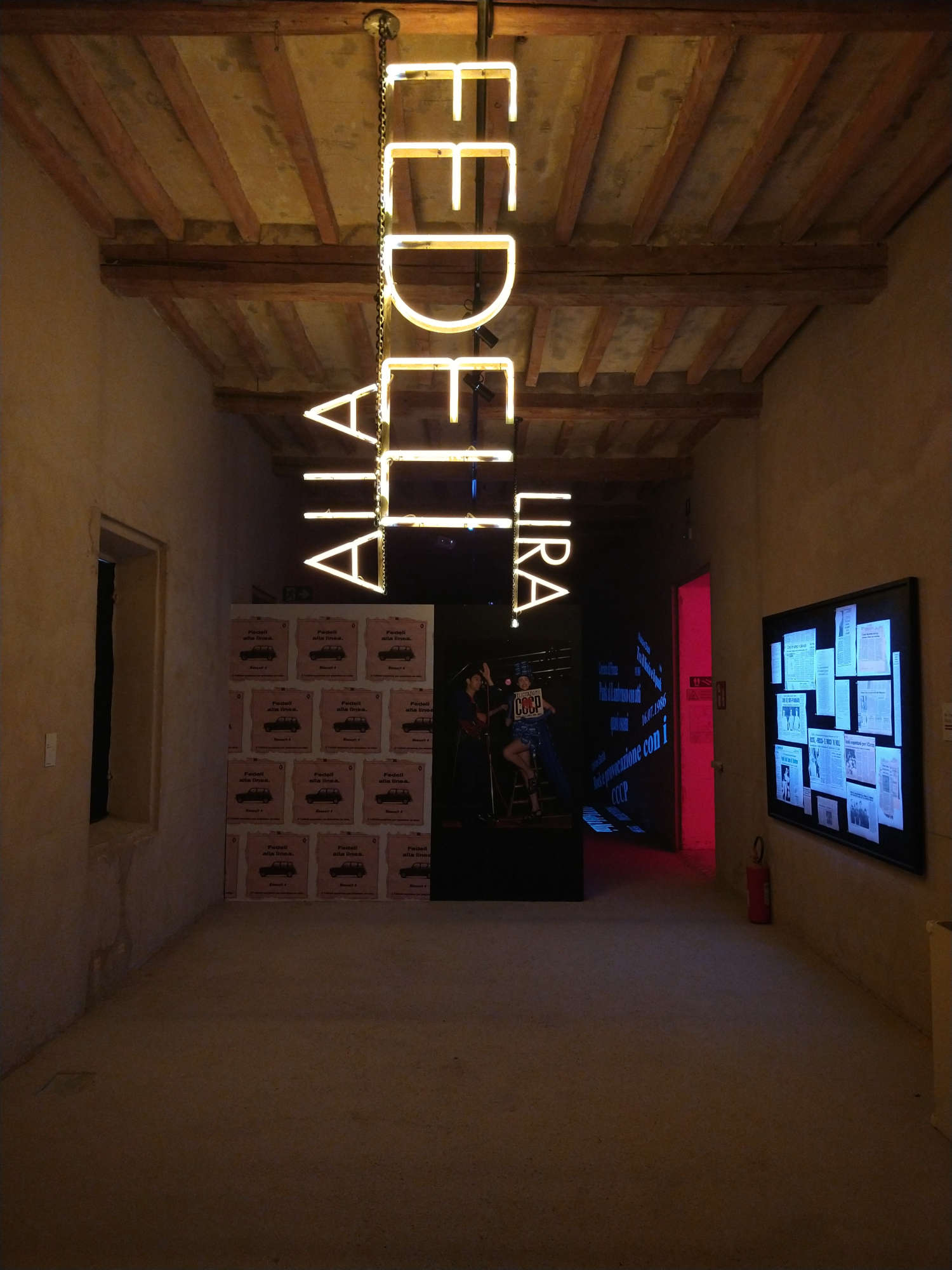
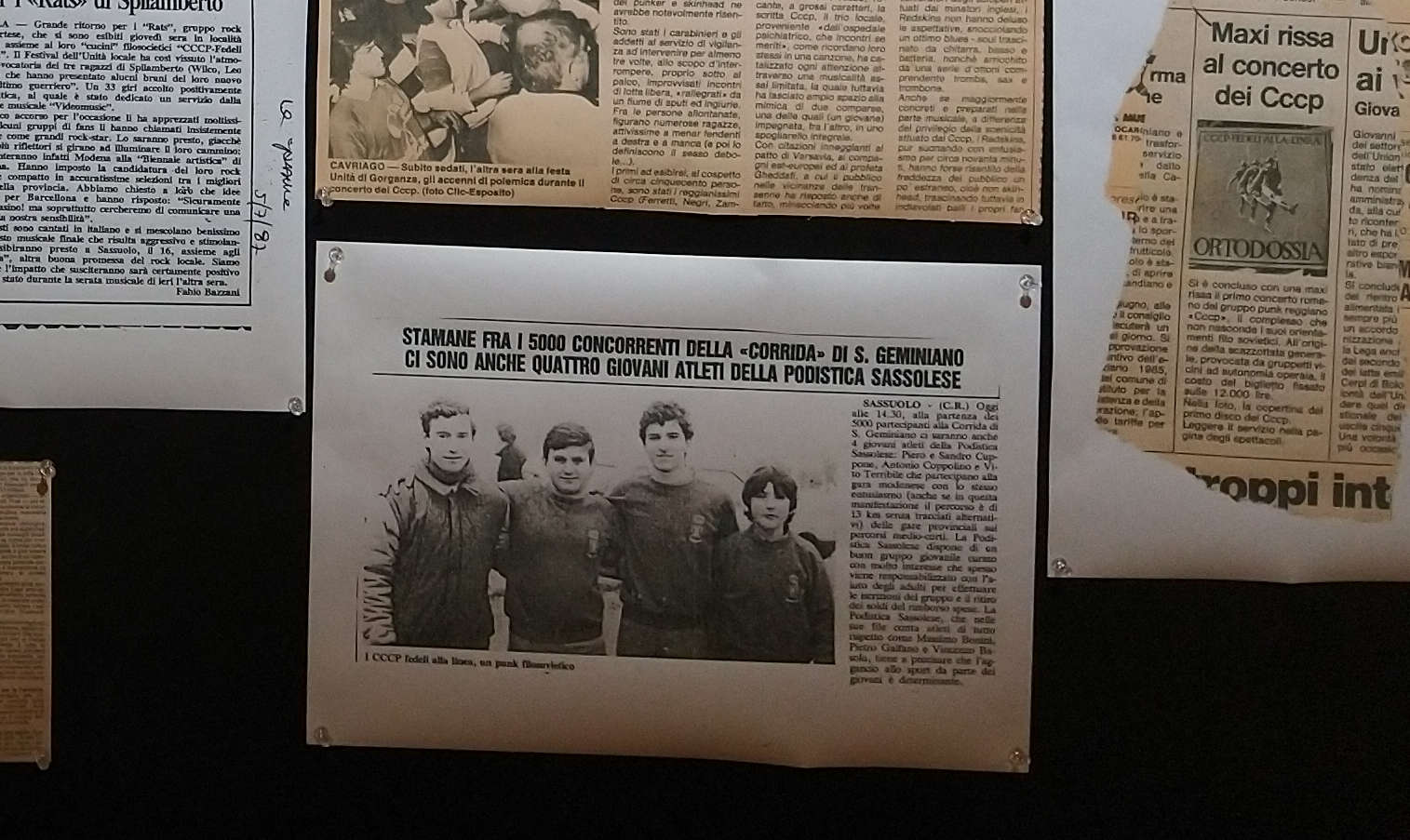
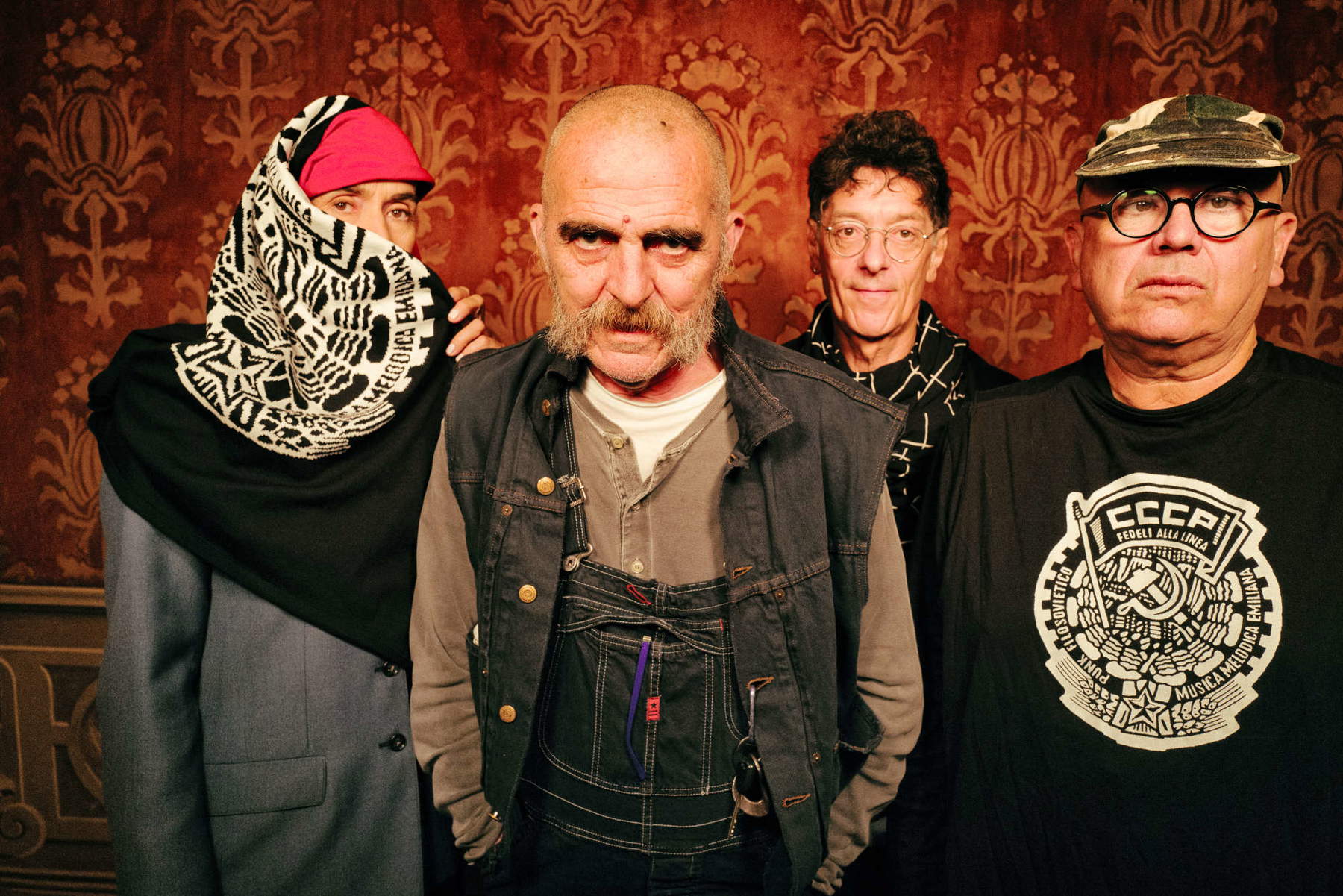
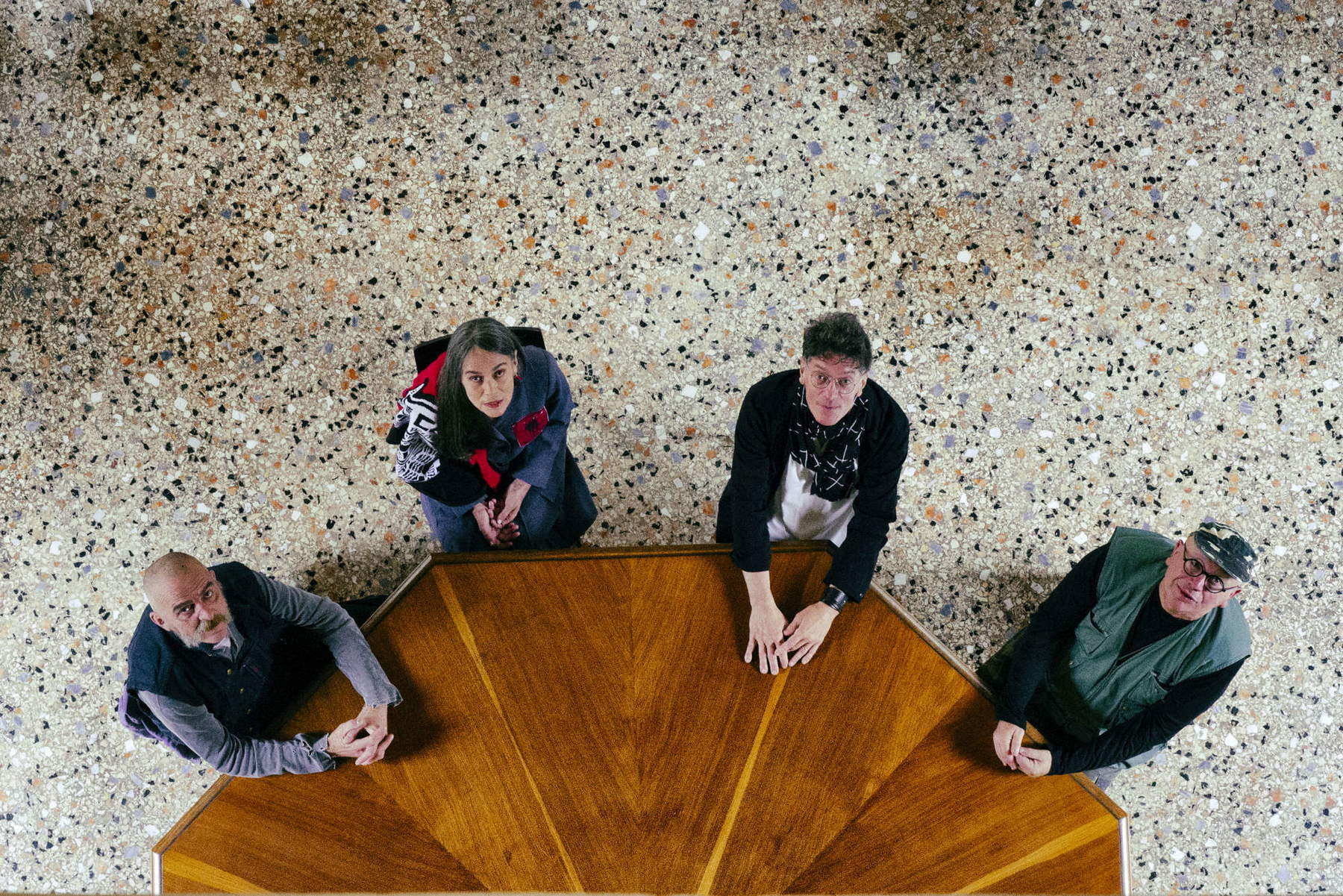

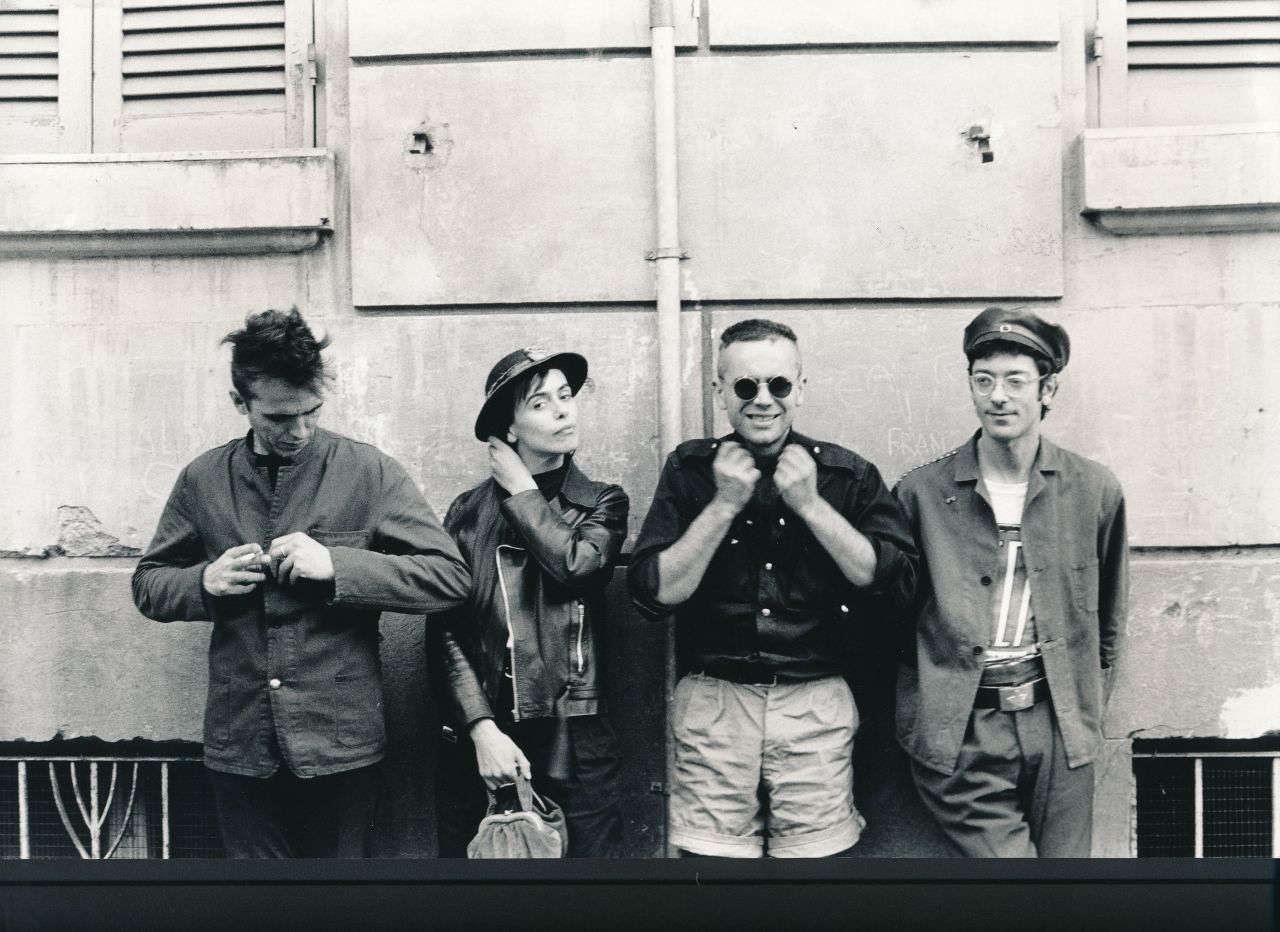
Then what happened? The Berlin Wall is torn down, the Soviet Union has collapsed, the Iron Curtain is no more. CCCP turns into CSI and the project takes on totally new forms, one story ends, another begins. Meanwhile it happens that the avant-garde, like all avant-gardes, becomes an institution to the point of entering the places of the institution. Complete with a press conference with the authorities. If you look closely you can also see the mayor. The deputy mayor. The city planning commissioner. Do you recognize him? Then given the bookshop prices the avant-garde also gentrified, aware perhaps that nostalgia is the most powerful feeling of our time, perhaps second only to indignation. It also says in press releases: one hopes to convey some of the spirit of that time, when Emilia was a teeming land of life impossible to remember for those who did not live it and for those who can rely just on memories, best if they come from a tutelary deity, let’s put a Pier Vittorio Tondelli, who spoke in 1990 of a “huge, glittering city of the night with its dance halls lying on the hills, the concrete maxi-discos surrounded by parking lots for thousands of cars, real cathedrals of ballroom dancing or disco dancing that suddenly emerge from the flattest and most uniform countryside; with bars open all night, jukeboxes and truck stop taverns.” Listening to music only in the last decade has totally changed, become a much more individual, perhaps more intimate element, certainly no longer the collective ritual it once was, the result being that live music venues are closing everywhere, replaced when good by restaurants and supermarkets, abandoned when not so good.
And what was once avant-garde now follows the litany of bourgeois ritual. Not that there is much else left, in fact. Better then to rely on memory to remember that we were alive. What will become of CCCP? It is not known. For now they are alive and greet the audience (again: will it really be so?) with a show precluded to any other rock band, with a huge “immersive experience” as copywriters would write fishing from their typical phrasing, with a show that blends music, theater, art, with a new image built with (almost) everything that has already been seen and heard: it could not have been otherwise. A piece of history that is sought to be brought to life. Reasons why the exhibition, a work of art in itself, is worth seeing even if you have never heard of CCCP. As I deliver these lines, the “Grand Gala” at the Valli Theater in Reggio Emilia scheduled for Oct. 21 and 22 has yet to take place. It is not known what CCCP will do: whether they will give a last concert as a cover band of themselves, whether they will make theater even by simply telling their stories, whether they will stage the prelude to an improbable end of the road tour not to be ruled out anyway regardless, whether more simply everything will end, everything will really become history, past to be remembered, to be read in books, to be looked at in photographs, to be listened to on records. Above all, it is not known what will become of it after the two evenings, after the exhibition. The premises that CCCP have been circulating for the past year are ambiguous (and how else could they be?): presenting Annarella Giudici as the band ’s testamentary executor and presenting themselves as a sleeping cell that has awakened is as contradictory as they could get. So, they will do what they want to do. Outside St. Peter’s Cloisters stands a huge banner with the words Giovanni Lindo Ferretti has written for the occasion, again in his usual oracular style. “ENTERTAINMENT / PROPAGANDA / DISSOLUTION / WAR WAR / on line mondovision / alerta sto, attendere.” Everything is to be expected without waiting for anything.
Warning: the translation into English of the original Italian article was created using automatic tools. We undertake to review all articles, but we do not guarantee the total absence of inaccuracies in the translation due to the program. You can find the original by clicking on the ITA button. If you find any mistake,please contact us.